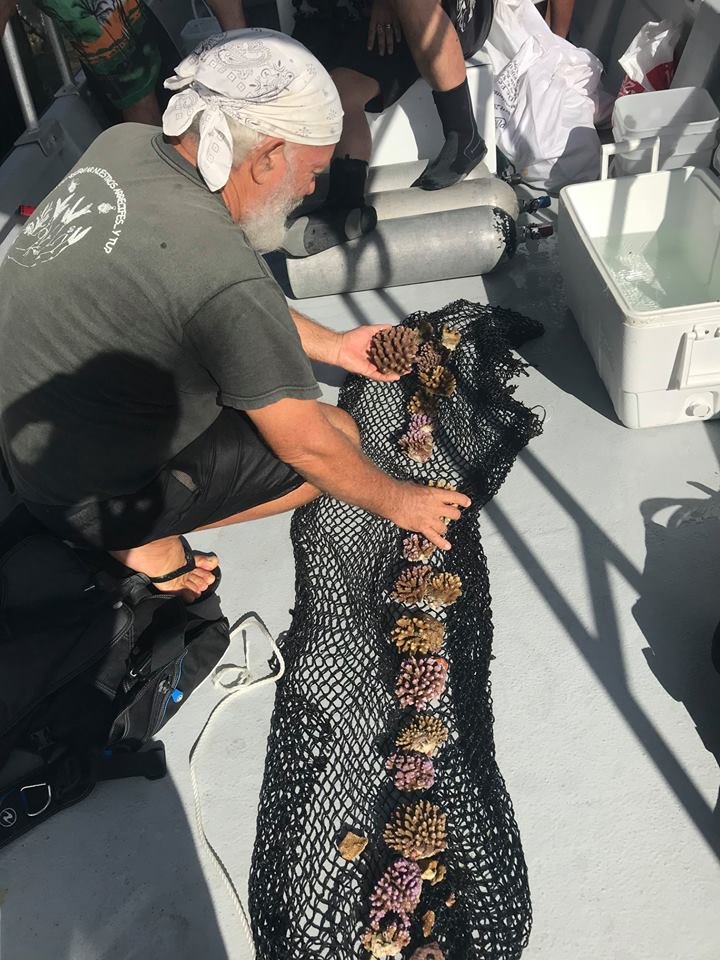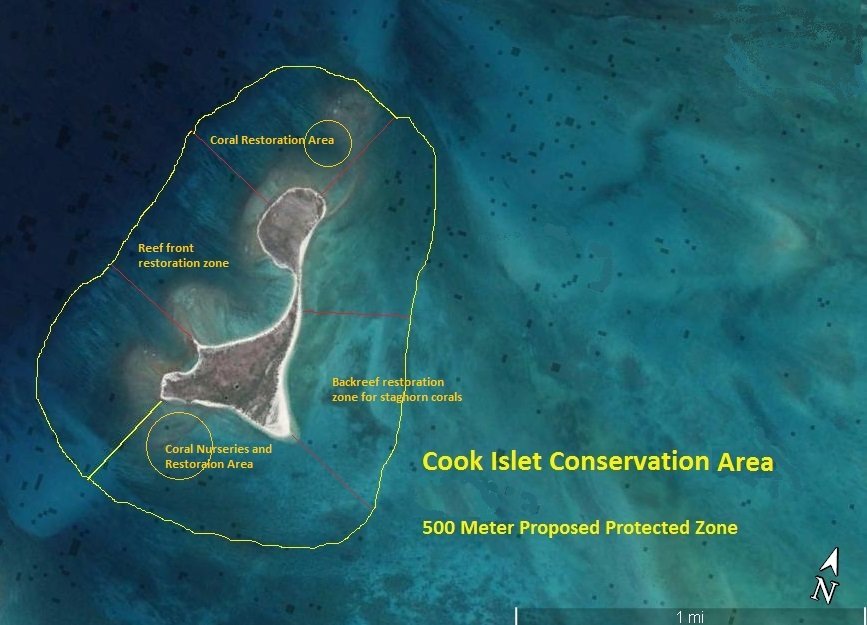By Austin Bowden-Kerby | Director
Greetings everyone,
I returned last month from the fourth trip over the past two years to Christmas Island, Republic of Kiribati, and am busy writing up the results to post online. I will share a brief summary here.
The corals in the nursery are mostly doing very well. The follow-up trip was originally scheduled for July, but Taratau Kiriata, the head of Fisheries for the Line Islands, who has been very helpful in providing the boats and materials, sent me an urgent request for help. The corals on the original nursery table had grown too big and the table was bending due to the weight and threatening to collapse. I instructed him how to shore up the table, and that I would make an early trip to begin the outplanting phase of the work- and I was able to get there just two weeks later. A one week trip turned into two weeks when a hurricane hit Fiji the day I supposed to return home, which cancelled the weekly fight.
The bleaching resistant Pocillopora corals in the nursery, which had been trimmed from the very few corals which survived the 14-month bleaching in 2015-16, had grown so big that they were growing together and beginning to compete with each other. We removed 29 colonies, each as big as dinner plates, and planted them about ten meters away onto dead corals which surround the site. With the new space opened up on the table, we planted new Acropora and Pocillopora corals which we had located on the shallow reef flat at Crystal Beach during our last trip. These are remnants of once very large colonies growing around the edges of the dead corals.
The staghorn corals, all of which became extinct on Christmas Island during the mass bleaching, were re-introduced into the nursery last year in June, trimmed from the few that had survived on Tabuaeran Atoll, and planted to ropes suspended between the two nursery tables. All of these staghorn colonies were found alive and fairly healthy, however, while they had doubled in size, they should have been five to ten times bigger. On close inspection, we found that each coral had multiple bite marks, having been bitten off multiple times by parrotfish. We actually saw the parrotfish doing this. So we identified a new nursery site in the inner lagoon at Motutapu island, an area formerly dominated by staghorn corals and with fewer parrotfish, and we constructed a small nursery and moved two of the ten ropes to this new site, to see how they do over the next few months. In July, if the corals are doing better in the new site, we will expand the work there, especially for the vulnerable staghorn corals.
On Christmas Island we also met with the Wildlife department to explain the dire situation of the dead reefs and our restoration work, and they have since put in a request for the establishment of a 500m no-fishing zone around each nursery site, as an exclusion zone, to also protect the bird nesting colonies in each site. In July I will be joined by a UK volunteer working with community processes and we will initiate participatory workshops to help gain community support and understanding for the crisis.
MORE NEWS:
In February a one-week training of university students in coral gardening took place, funded by Plantation Island Resort. Six marine studies students were trained, five from Fiji and one from Papua New Guinea. A full-time job was created at the resort for one of the trainees. Two coral nurseries were created to cultivate what is assumed to be bleaching tolerant corals, collected as fragments from larger coral colonies living in thermally stressed shallow waters. Stress tests of the corals will take place in the hot season January-February, and only those corals which prove to be bleaching resistant will become part of a rehabilitation and adaptation project sponsored by the resort for the Malololailai MPA. A future report will highlight this activity.
I have been invited to present at the Coral Reef Symposium in Cairns, Australia in July, and they have offered to pay my airfare. This is a big step, being able to share lessons learned with new coral reef restoration practitioners on the Great Barrier Reef. On my way there, a stopover in Vanuatu is planned, to save funds while following up with the coral nursery work on Efate and Nguna Islands, as it is time to trim the staghorn corals on the ropes and to teach the communities how to do that and to outplant second generation bleaching resistant corals back to the reef.
A very exciting development is that the Tuvalu Government, funded through the UNDP, has asked for a project proposal to begin coral reef adaptation work there as a paid consult, and if approved that will expand the work, and at no cost to the project. Ultimately we hope that every government of the region will support the coral adaptation work, using qualified and locally trained coral gardeners, so that the funds needed for this vital work will finally be available.
Things are moving along well and on a shoe-string thanks to local counterparts offering accommodation, local transport, and sometimes help with airfares. Thanks again for helping make this work possible, at this critical time when other sources of funding are not yet in place.
Vinaka vakalevu!
Austin
Project reports on GlobalGiving are posted directly to globalgiving.org by Project Leaders as they are completed, generally every 3-4 months. To protect the integrity of these documents, GlobalGiving does not alter them; therefore you may find some language or formatting issues.
If you donate to this project or have donated to this project, you can receive an email when this project posts a report. You can also subscribe for reports without donating.
Support this important cause by creating a personalized fundraising page.
Start a Fundraiser
